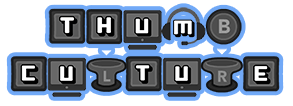
It’s easy to see why video games are now generally regarded as works of art. The blending of many different mediums to create a unique interactive experience is truly astounding. And with the advancements in technology and media, people are now more freely able to explore and appreciate them. One that has gained significantly more attention is music. Video game soundtracks have garnered more attention from both players and critics over the years and it’s now easier than ever to listen to your favourite game’s musical offerings.
Because of this, there is now also a certain level of musical expectation in video games. Nowadays, it’s no surprise that a video game showcases a grand, multifaceted soundtrack, often using a wide variety of instruments. Even a full orchestra. And most players will assume as much. But back in the days of the Playstation/Playstation 2, when certain mechanics and styles were still finding their feet, it was more common for players to judge a book by its cover. And if a game appeared subpar and was also poorly received by critics, then players would have no reason to delve any deeper. But as Roald Dahl once wrote, “the greatest secrets can be found in the most unlikely places”.
Rummage through the vast libraries of the PS1 and 2 and you’ll find some magnificent soundtracks that belie their games’ appearances. Whether considered lower in quality or expected to follow a certain musical theme, you would never guess these games possessed such incredible scores. Scores that deserve to be brought to a new audience of listeners (and give retro audiences a good dollop of nostalgia). That’s where I gleefully come in.
Here are 7 retro Playstation games with soundtracks to truly surprise you:
Spider: The Video Game
Platform: PS1
Released: 1997
Developer: Boss Game Studios
Composer(s): Barry Leitch
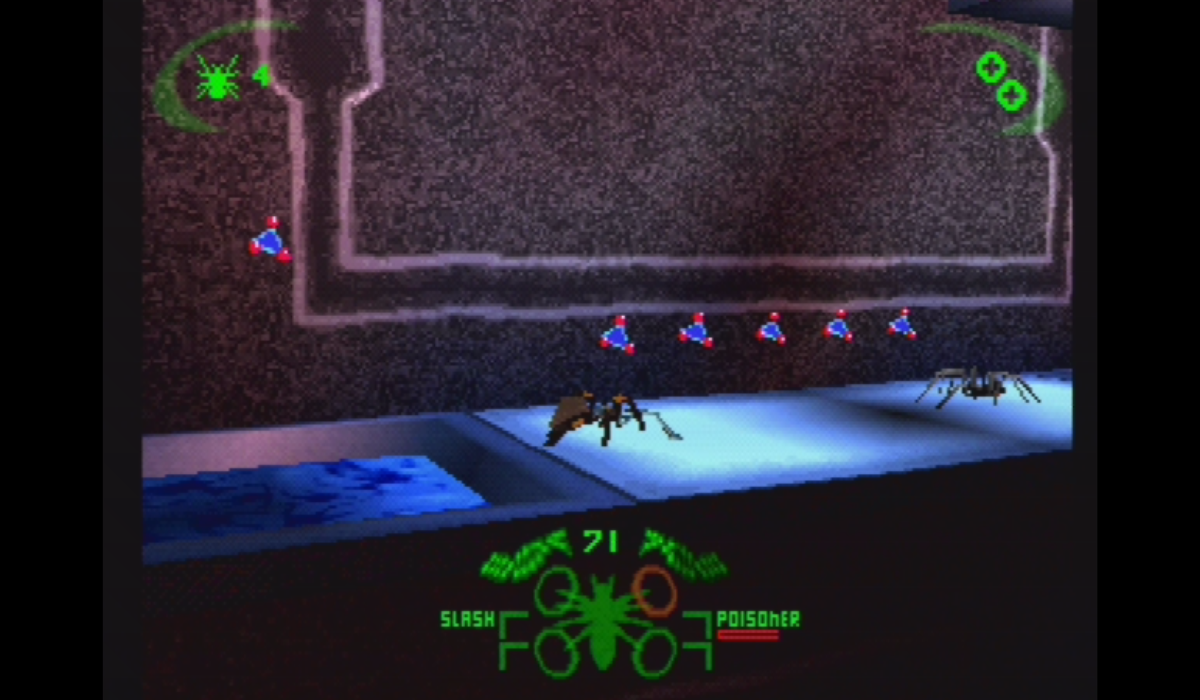
When you think of ‘90s gaming, usually the first genre that comes to mind is platformers. The undisputed king of the early 3D era, home consoles were oversaturated with platforming adventures. This of course considerably heightened the need for games to stand out to rise above the crowd. Boss Game Studios decided to take an unusual approach: make a platformer centred around one of humanity’s greatest and most widespread phobias. Thus, Spider: The Video Game was born.
You are a cybernetic spider, implanted with the mind of your scientist creator minutes before he is mortally wounded and kidnapped by intruders. You must crawl, climb and swing your way through dangerous locations to get your human body and your cybernetic technology back. While its reception was fairly positive and the platforming mechanics truly captured a spider’s movements and behaviour perfectly, sadly the game didn’t quite stand out as much as Boss Game Studios hoped it might. However, there was one thing Spider did have that others did not: veteran game composer Barry Leitch.
Blending the past with the world of tomorrow, Leitch creates a retrofuturistic feast for the ears with powerfully atmospheric synth rock and a dash of electronica. Don’t let the simple titles fool you! LAB FLOOR/LAB TOP opens with a voice-over and futuristic ambience, giving way to punchy, raw guitar riffs. SINKS/ON THE CEILING showcases bold electronic loops and keyboard segments that evoke a heroic ‘80s sci-fi battle. CONVEYORS/CIRCUIT BOARDS/HARD DRIVES’s slap bass bars will live in your head rent-free. And THE WELLS/ALONG THE SEWER/UP THE WELL’s hauntingly beautiful piano upon low bass is especially disarming.
Become more at home with arachnids and listen to more below.
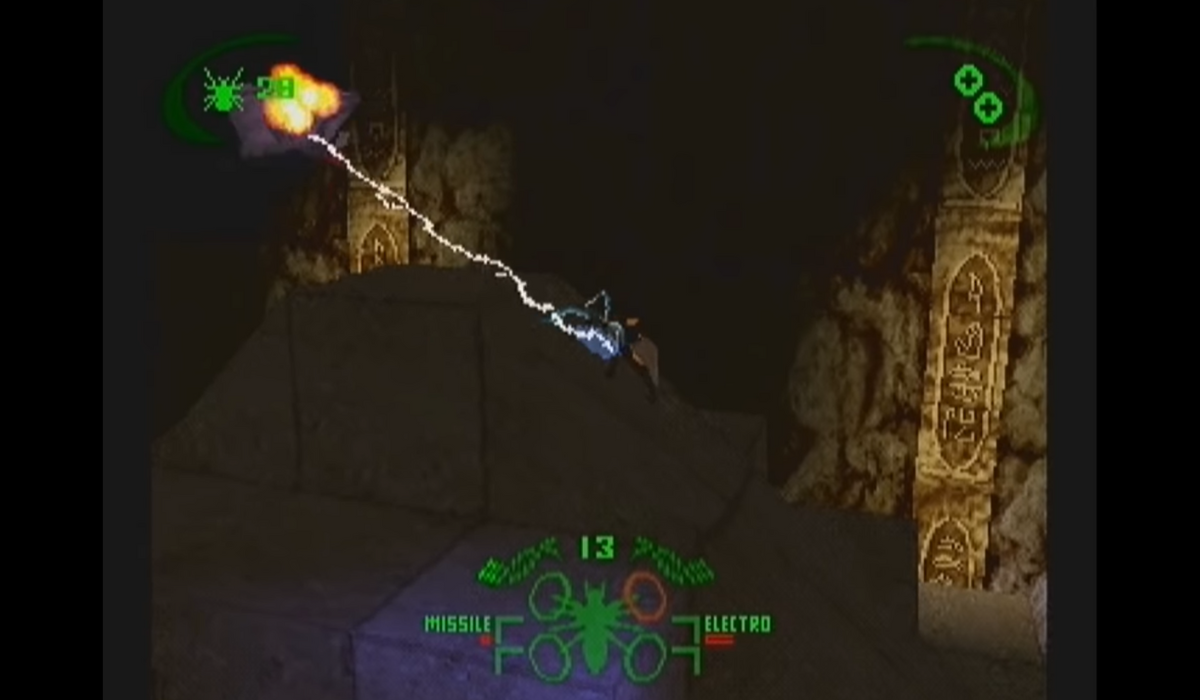
Nightmare Creatures
Platform: PS1
Released: 1997
Developer: Kalisto Entertainment
Composer(s): Frédéric ‘Elmobo’ Motte
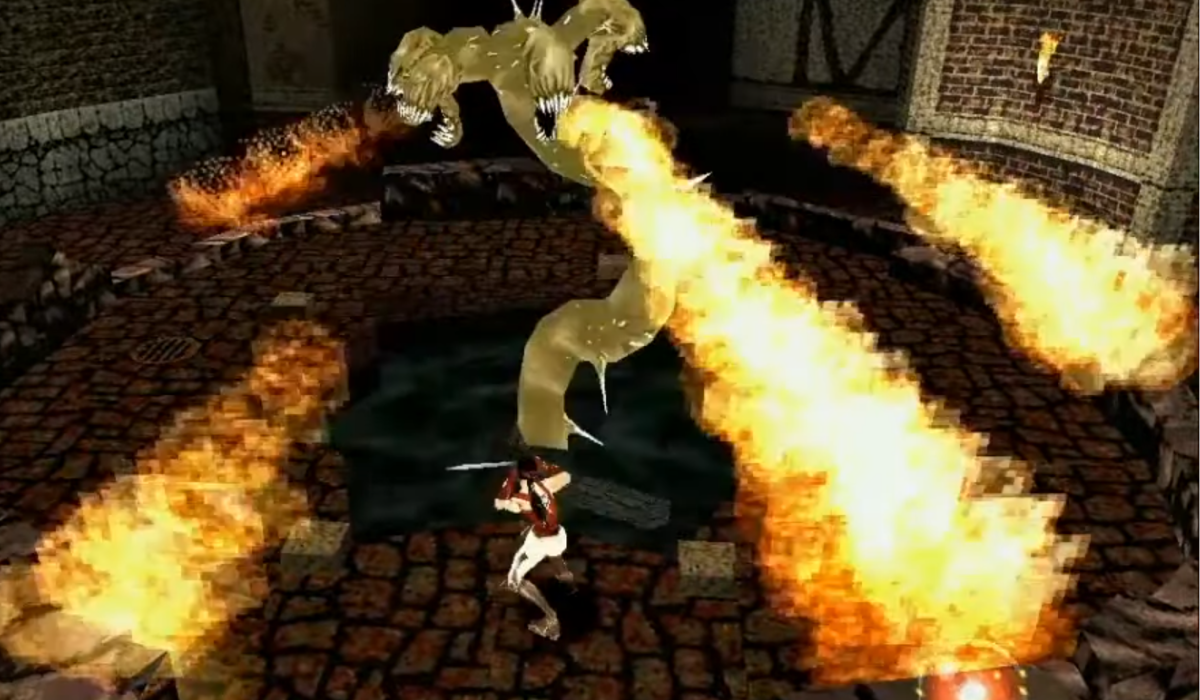
The best horror movie creators know that a stellar soundtrack is essential to creating a harrowing atmosphere and eliciting scares. It is no different in the world of video games. Yet, aside from perhaps one standout theme, often the majority of this element can be overlooked, even in its more successful titles. Nightmare Creatures by Kalisto Entertainment was a commercial hit with sales of over 1.5 million units by 2000 and ports on both Windows PC and Nintendo 64, though the original Playstation version was considered more polished and thus more favourably received by critics.
The game takes place in Victorian London, 1834, where mad scientist Adam Crowley has unleashed a virus into the air, causing the dead to rise again and people to mutate into grotesque monsters. It is up to occult expert Father Ignatius Blackward and Nadia Franciscus to put an end to Crowley’s machinations and stem the tide of evil. Despite the horror setting and elements, Nightmare Creatures’ gameplay was predominantly action-centric, thus reflected in the boss battle themes; fiery, heavy metal accompanied by gothic organs and choral harmonies. But where this delectably dark game actually shines isn’t in its bad-ass battling, but instead in its exploration ambience.
Composer Frédéric ‘Elmobo’ Motte expertly creates chilling soundscapes with carefully layered instruments and sounds, from ghostly whispers and rattling chains to reverberating slap bass and low cello notes. The gothic horror inspiration is woven into each track with different arrangements of sounds, including natural ambience like running water, gusts of wind and lightning strikes. Every piece makes you feel uneasy, anxious and thoroughly immersed in your worst nightmare.
Have a listen and scare yourself silly!

A Bug’s Life
Platform: PS1
Released: 1998
Developer: Disney Interactive Studios, Traveller’s Tales
Composer: Andy Blythe, Marten Joustra
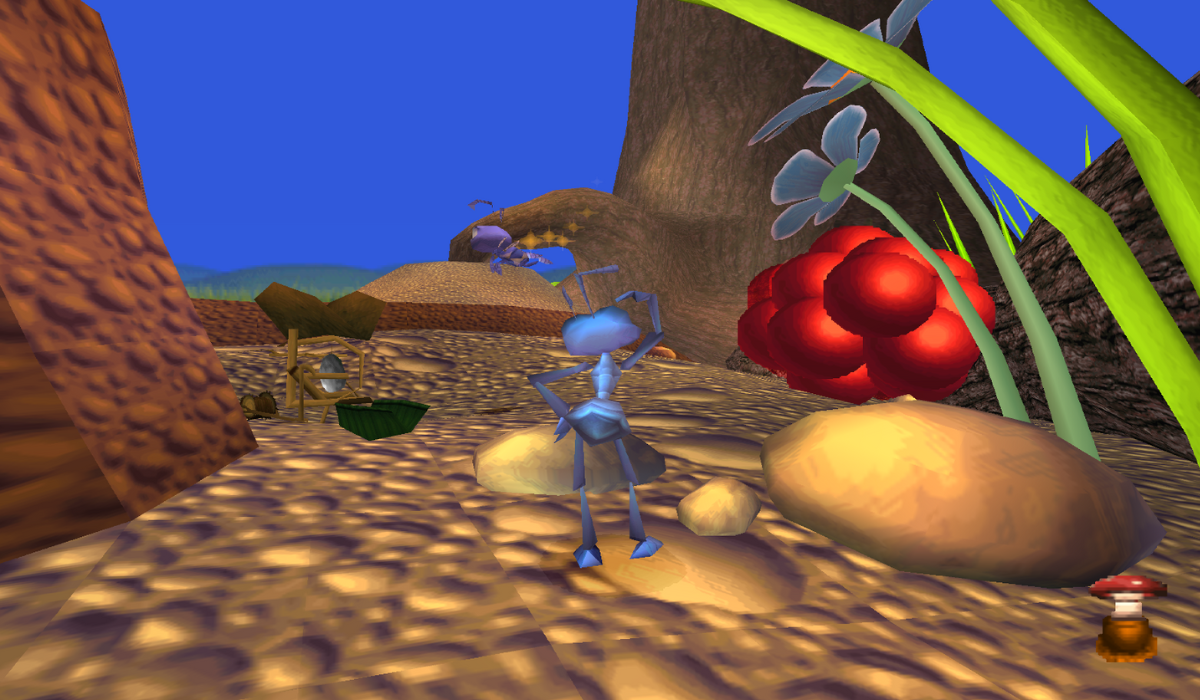
Video games based on movies have always been rather hit-and-miss, particularly those connected with Disney. While many ‘90s and early ‘00s kids fondly remember some of the Disney games on the PS1, very few won over critics. A Bug’s Life from Traveller’s Tales was sadly not one of them but is widely remembered; simply mention the phrase “SUPER BERRY!” and many childhood memories come flooding back.
Players guide hapless but plucky worker ant Flik on his quest to find warrior bugs to defeat the tyrannical grasshoppers terrorising Ant Island. Following the plot of the movie, the levels combine platforming puzzles with finding collectables. Not too dissimilar to the outings of a certain bandicoot released two years prior. One would be forgiven for expecting something similar musically; bouncy, hyperactive, a little wacky perhaps. But Tales’ composers Andy Blythe and Marten Joustra decided this game needed something a little bigger.
Amplifying the perspective of a tiny ant in a huge world, Blythe and Joustra’s score is unexpectedly grandiose and heroic. The themes of the ant world combine tribal drums and pan flutes with dramatic piano while the city themes mix samba and jazz rhythms with trashcan and glass sounds. RIVERBED RUN is a standout track, making traversing a dry riverbed an epic and dangerous venture with militaristic drums and high crescendos. As is LEAD THE REVOLT, stoking a fire in the blood for battle with reverberating digeridoos, pounding drums and rhythmic chanting.
As the old adage goes, “big things come in small packages”, and A Bug’s Life’s soundtrack was one such epic musical creation on a PS1 disc. Listen to more stellar tracks below.
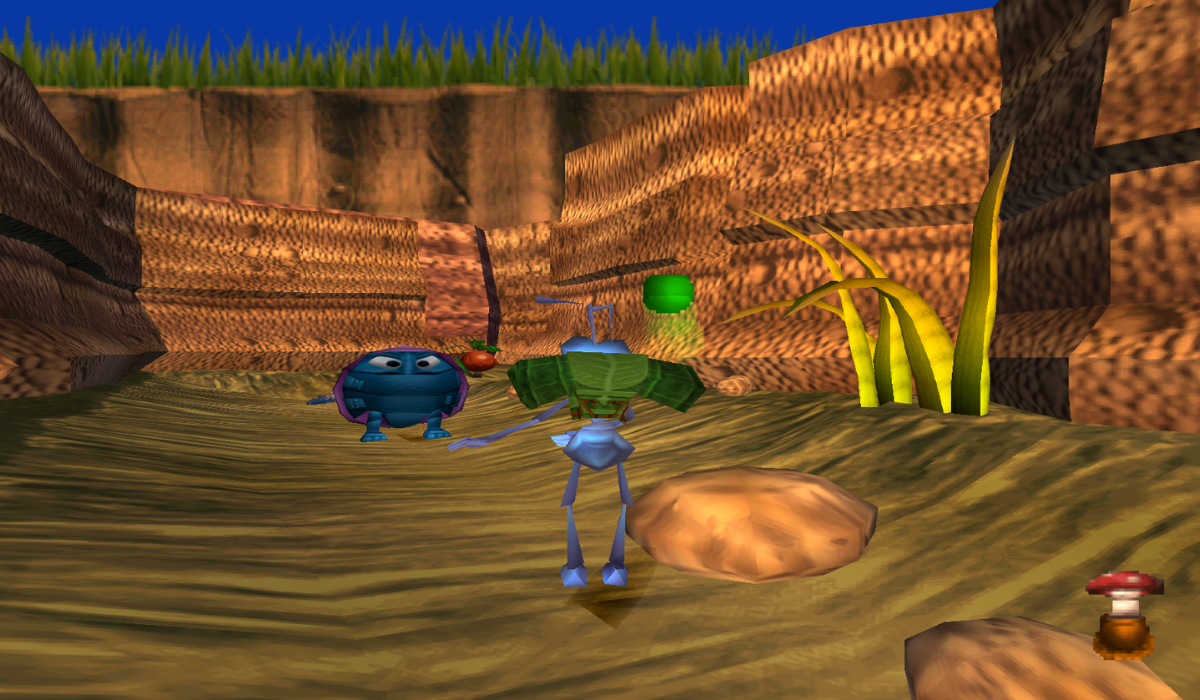
Bugs Bunny & Taz: Time Busters
Platform: PS1
Released: 2000
Developer: Behaviour Interactive
Composer(s): Gilles Léveillé

Since online play revolutionised multiplayer gaming, couch co-op slid into a state of perpetual decline, only recently being revived with the release of ‘It Takes Two’. The PS1 sported a wide variety of multiplayer masterpieces to spend an enjoyable afternoon with a buddy on. One of the best, yet still occasionally overlooked, is the great Bugs Bunny & Taz: Time Busters.
An unlikely pairing of Looney Tunes legends, Time Busters sees Bugs & Taz trying to restore the balance of time itself. Daffy Duck breaks the great Time Regulator, getting transported through history and begins wreaking havoc in different time periods. By working together, Bugs & Taz must recover the Time Gem to put right Daffy’s meddling and repair the fractures in time. While single-player mode was an option, this platformer was much more enjoyable with two and practically made for co-op, the execution was so slick. As you’d expect from Looney Tunes, there’s plenty of bombastic brass and sliding xylophones to give off the wacky cartoon vibes. But composer Gilles Léveillé throws you for a loop in the ‘Moon Valley’ level.
Wackiness is replaced with aetheric vocal notes and foreboding strings, comedic trumpets with punctuating tribal drums and rippling harps. Léveillé paints a fantastical musical picture that would easily lend itself to the likes of Middle Earth or Tamriel. Close your eyes and immediately you’re enveloped with a feeling of mysticism and serenity, yet also anticipation. Until you leave the heroes standing idle for too long and Taz tries to take a bite out of Bugs.
A true musical surprise from seemingly humble surroundings, this track is definitely one to add to any instrumental playlist. To save Bugs’s tail fur, listen to it below.
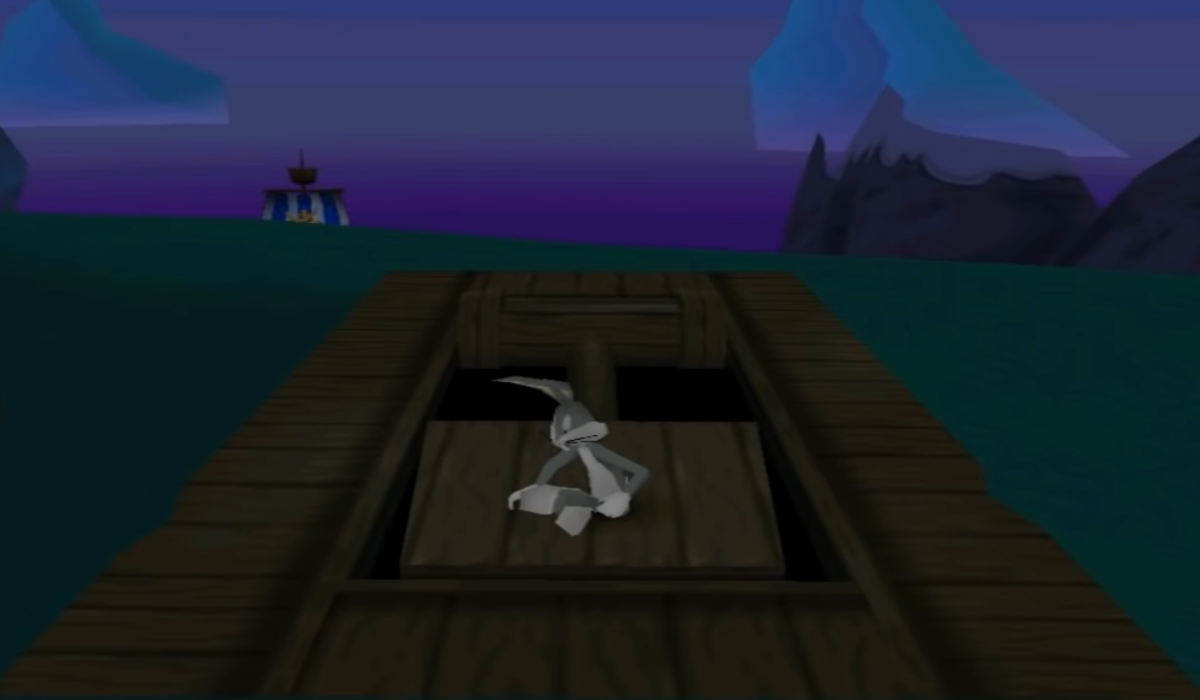
Breakout
Platform: PS1
Released: 2000
Developer: Supersonic Software
Composer(s): Gerard Gourley
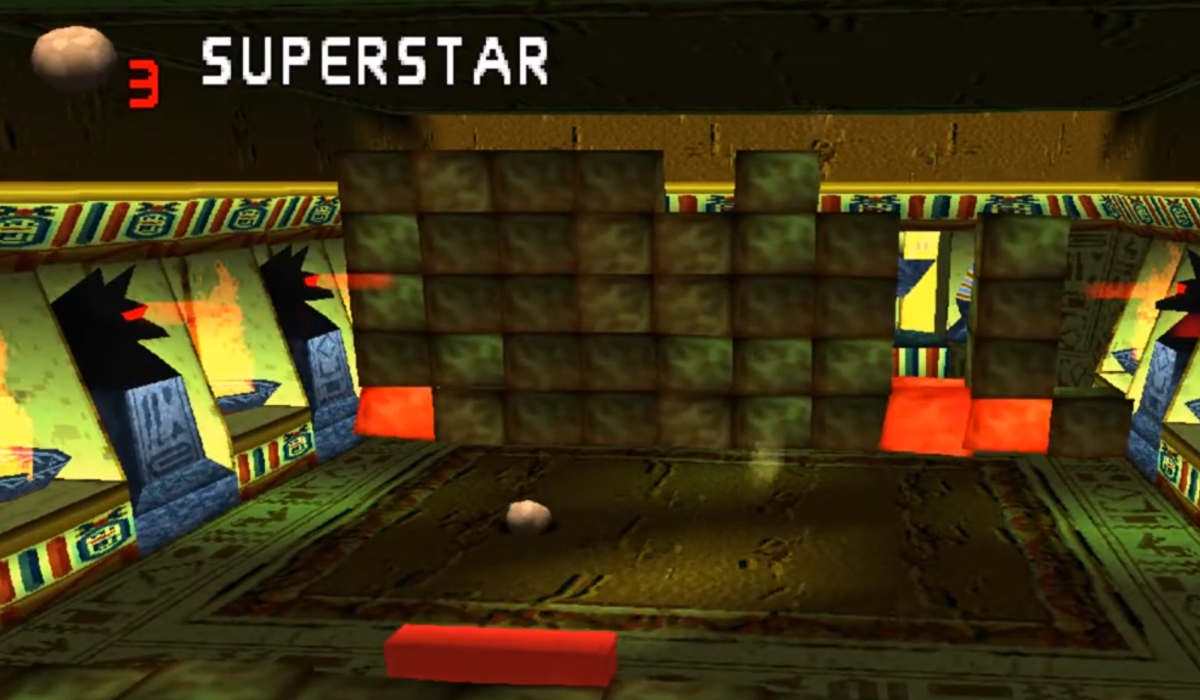
Having just celebrated its 50th birthday, Atari has been a part of the gaming landscape since its inception. The end of the millennium saw many Atari and other arcade classics be given the 3D treatment on the PS1. Some were even fleshed out with anthropomorphic aspects and storylines. But the story we never knew we needed was ‘a story of bat meets ball’. Enter the utterly bonkers 3D reimagining of the 1976 classic Breakout.
In a world of bouncy, expandable paddles with anime-inspired eyes, you are the red protagonist Bouncer. The evil Batnix has captured your friends and thrown you in prison. You must *ahem* break out and traverse various stages to rescue your colourful paddle buddies and your lady love paddle Daisy. That sounded wrong. A concept that is as equally cute and off its rocker as it sounds, the 3D treatment produced somewhat mediocre results for Breakout. While some inventive mechanics mixed things up a little, the formula ultimately was still very much the same: bat, ball, blocks, repeat. But Gerard Gourley’s score is certainly more marvellous than mediocre.
Gourley showcases quite the flair for blending the technological with the cinematic in his electronic compositions. This is particularly evident in the later stages. ‘Robot Rampage is gritty yet melodic, reflecting a desperate battle in close quarters. ‘Missile Madness’ is intense and pulsating yet somehow unnerving; at any moment something could get the drop on you. And ‘Endgame’ effortlessly evokes an image of a hero rising to their feet to face their final battle.
The story of bat meets ball has never sounded so epic and it’s well worth a listen. Check it out below.
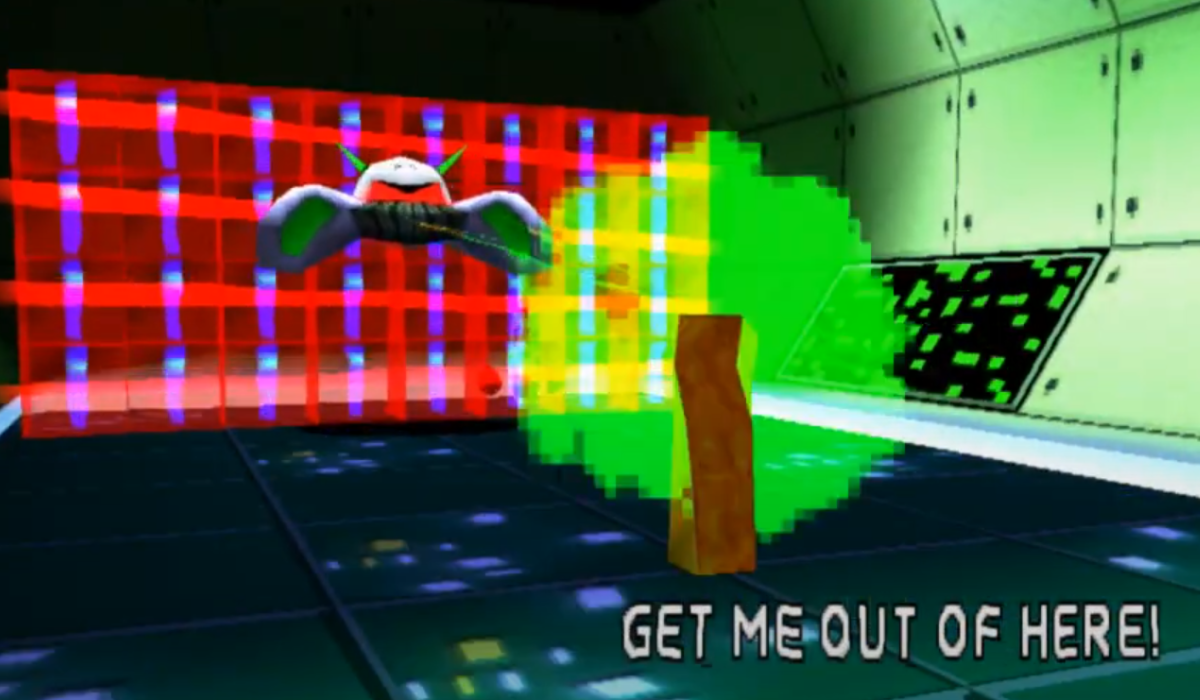
Portal Runner
Platform: PS2
Released: 2001
Developers: The 3D0 Company
Composer(s): Ron Fish, Robyn Mendheim, Brian Min, Brian Withycombe
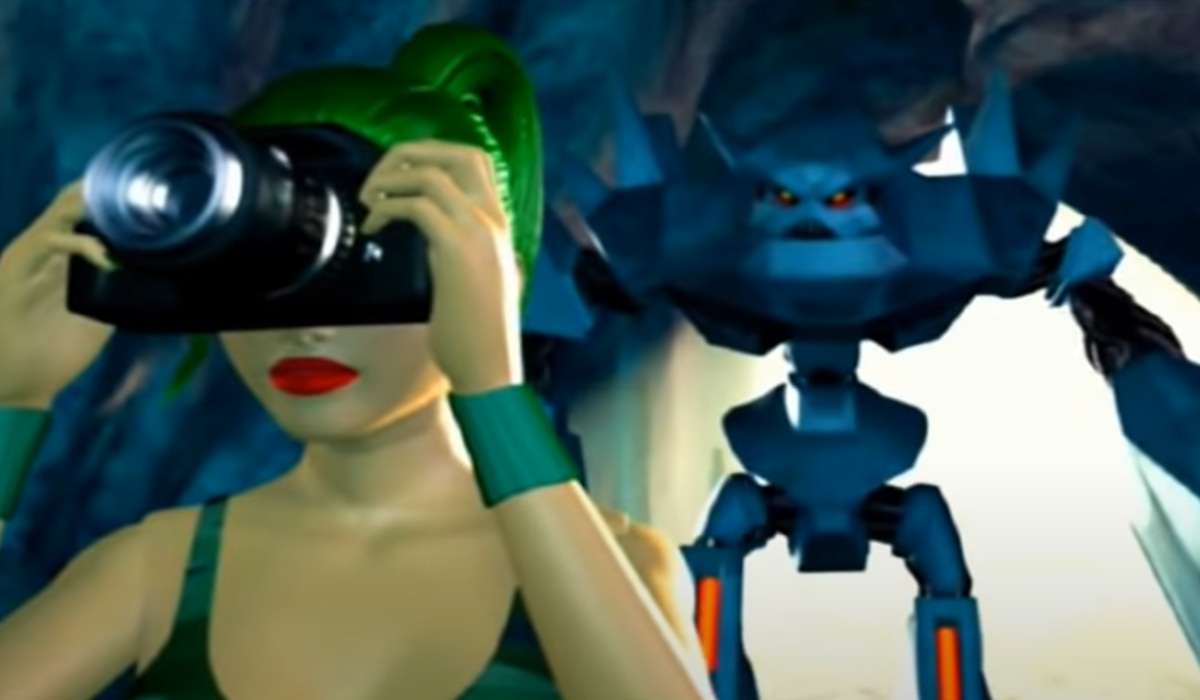
Sometimes you’ll encounter a video game series that will make you question “How did this get a sequel?” Not that it was especially bad, but not one considered sequel-worthy. The ‘Army Men: Sarge’s Heroes’ subseries was one of these virtual oddities. The original Sarge’s Heroes received a mixed to below-average reception from both critics and players, as did its sequel on the PS2 in 2000. Decidedly tepid at best. The great Jim Cummings flexing and voicing ALL the male characters notwithstanding. Nevertheless, Portal Runner was released a year later.
Switching platoons for platforming and manoeuvres for the magical, supporting character Vikki Grimm now takes the lead. After the events of Sarge’s Heroes 2, Brigitte Bleu decides to forcibly make Sergeant Hawk her husband, so she casts Vikki into a portal many leagues from the Army World. Trusty bow in hand, Vikki must find her way home and save Hawk from Brigitte’s evil wiles. Portal Runner was widely regarded as the worst in the series, boosted by the GamePro review controversy. Even with Jim Cummings returning to flex. But beneath the lacklustre veneer was a thoroughly impressive score penned by four of 3DO’s finest.
Still keeping an underlying militaristic feel, Ron Fish, Robyn Mendheim, Brian Min and Brian Withycombe utilised a whole orchestra and then some to encompass the different portal worlds. The CAVE theme is unnerving and suspenseful, sounds flitting just at the edge of your hearing. The DARK FOREST theme’s rumbling drums and mournful piano exude a blend of darkness and despair. And the ANTI-GRAVITY DOME theme’s ethereal echoes and gentle electronic beat instantly give one a feeling of complete weightlessness.
It may have been a sequel no one expected, but it also brought a soundtrack that no one expected – both varied and impressive. Listen to more tracks below.
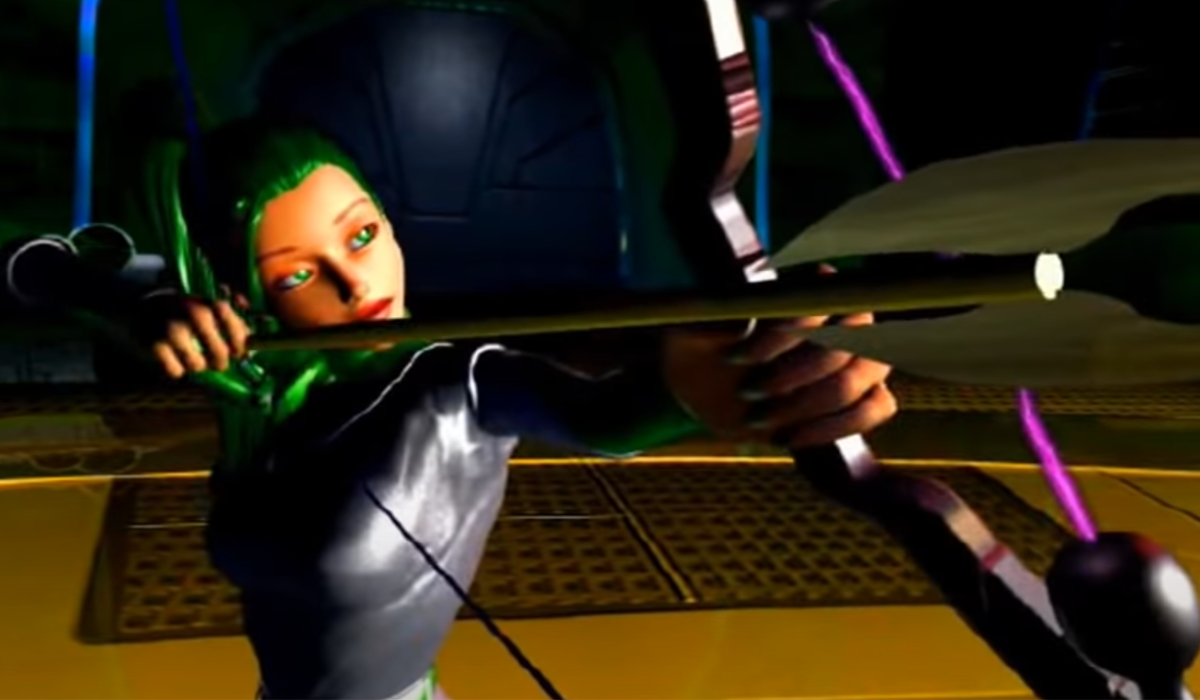
Klonoa 2: Lunatea’s Veil
Platform: PS2
Released: 2001
Developer: Namco
Composer(s): Kanako Kakino
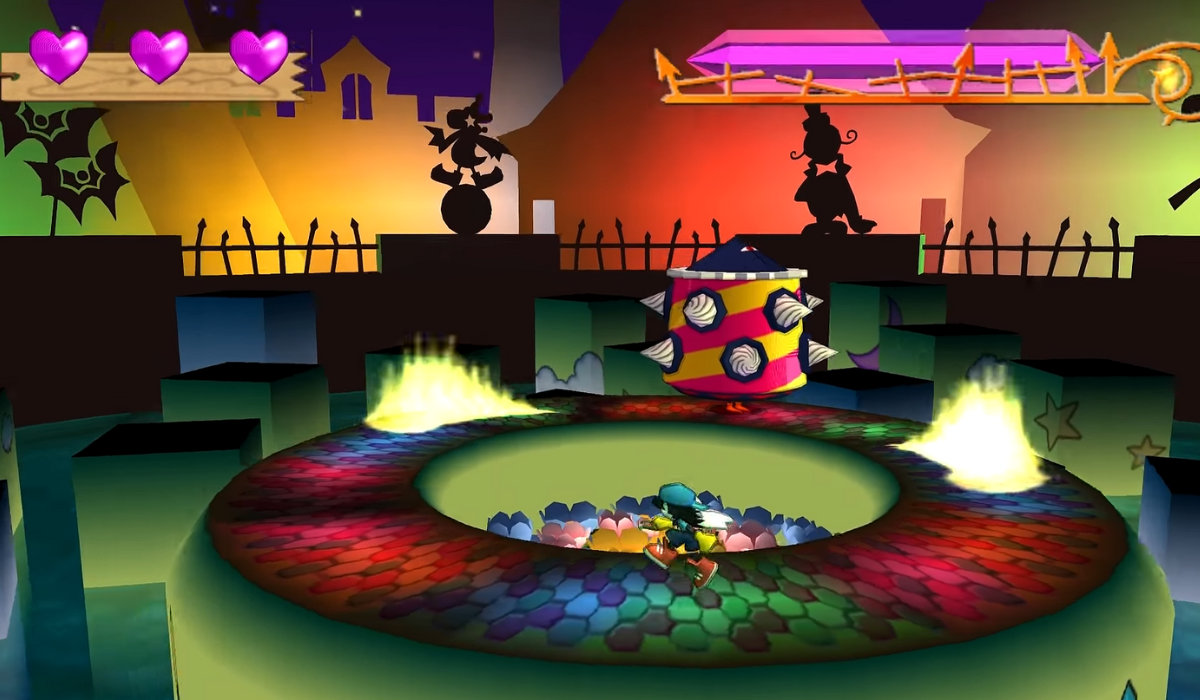
The most widely beloved title on this list, Klonoa 2: Lunatea’s Veil released in 2001 to universal acclaim. As a result, it quickly cemented itself as one of the shining stars of the growing PS2 library. And with the recent release of the Phantasy Reverie series, it looks set to shine even brighter for a new generation of gamers.
A direct sequel to Klonoa: Door to Phantomile, it follows dream traveller Klonoa traversing the fantastical world of Lunatea. Its four kingdoms are under threat from the sky pirate Leorina and Klonoa & friends must travel to each kingdom to thwart her machinations. At face value, one would assume the soundtrack to be reminiscent of Nintendo mascot adventures: primarily light and jovial. And indeed Klonoa 2 offers plentiful helpings of tinkling percussion and whimsical whistles. But, without giving anything away, anyone familiar with the Klonoa series knows it is one of unexpected wonder. And composer Kanako Kakino shows the full breadth of her musical prowess in the fourth act.
‘Cursed Leorina’, the theme of battle with the aforementioned antagonist, suddenly switches cartoonish whimsy for a powerfully epic orchestral affair. Its intensity hits with the force of a sledgehammer. Commanding drums and fluid yet frenetic strings are used to breathtaking effect and evoke the heightened energy of battle combined with all-consuming emotion – a perfect reflection of the path both Klonoa and Leorina’s exploits have led up to. This track also holds the title of my favourite video game track of all time (and my phone ringtone!).
To say more is to thoroughly spoil the expertly crafted story, which I heartily advise you to play and experience for yourself. But you can listen to this masterful track below.

Video game soundtracks continue to grow, but these games show that huge potential was already there. It was just hidden in unexpected places. And no matter what amazing feats are achieved in the future, I hope there will always be games like these; to surprise and enlighten us.
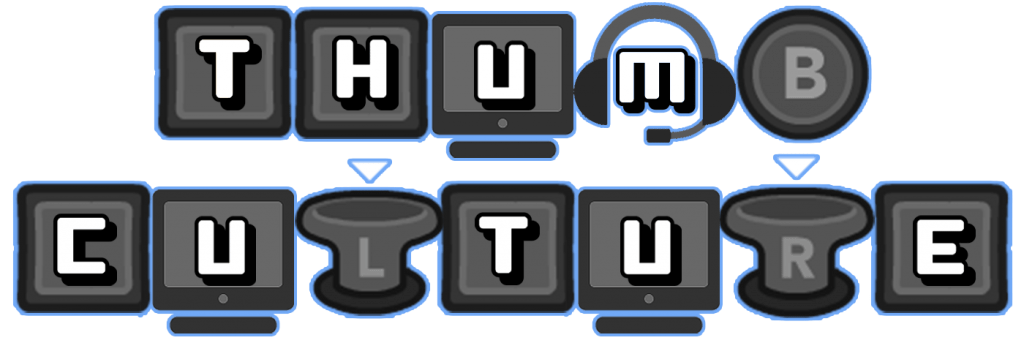
YouTube | Facebook | Twitter | Instagram | Discord | Podcast
